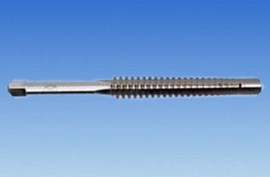WHAT IS TRAPEZOIDAL THREAD TAP

Proper measurement is an essential requirement in engineering work. The perfect method of taking a size is through gauges, and trapezoidal thread taps are one such gauge.
The primary use of Trapezoidal thread forms is for power screws or leadscrews. These screw thread profiles are designed with trapezoidal outlines. On the other hand, industrals depend on the trapezoidal thread taps due to its high strength and relief. They are typically found where the huge load is needed, such as leadscrew or a lathe or the vise. Trapezoidal thread tap can also be used in the machine, which is required for high translational speed.
ACME is considered as the original and first every built trapezoidal thread, though with a slight difference, and it is still one of the most commonly used thread tap in the world.
The ACME thread tap is found in one of the most crucial engineering works where the failures or defects can simply not be tolerated, and negligence would result in nothing but huge losses of lives and properties. The examples are aircraft, rockets, and high speeding trains.
ACME thread also has different benefits over other threads like square threads. ACME can be cut without difficulty with the help of die and single point threads. Unlike square-thread acme has better wear that allows for the satisfaction of wears. In strength, it’s known as the best thread type. It also allows the but to involve perfectly and smoothly into the place on the lead screw.
Trapezoidal metric thread is almost the same as the ACME thread. The angles make it different; ACME thread has 29 degrees, while the trapezoidal metric thread has an angle of 30 degrees. ACME thread is the most widely used Trapezoidal Thread form, while the metric thread forms are more widely used for triangular threads forms.
Square threads are mostly preferred for moving heavy loads, but they were a huge obstacle to be manufactured. It was high quality and very productive for required reasons like high load transfer, and the main reason for their highly effective was the 90 degrees flank angle.
The difference between ASME thread taps and trapezoidal thread tap is the angel. The trapezoidal thread tap is 30 degrees while ASME is 29 degrees. The difference is small, but their uses are the same. Just like ACME thread, trapezoidal thread tap also needed a high special skils in mechanical energy and use of expertise tools.












